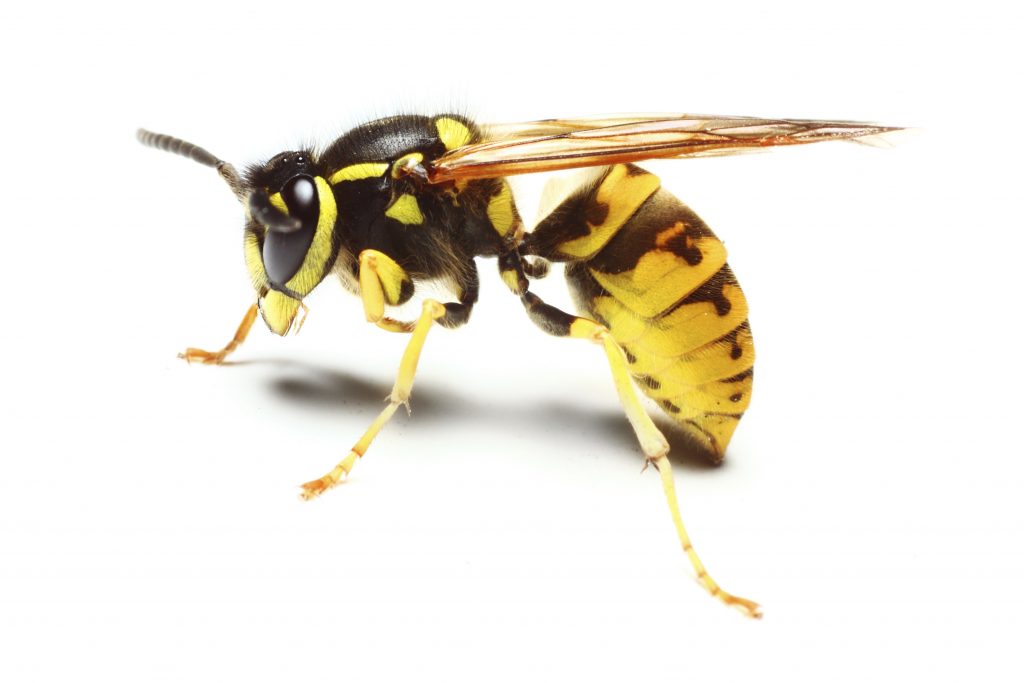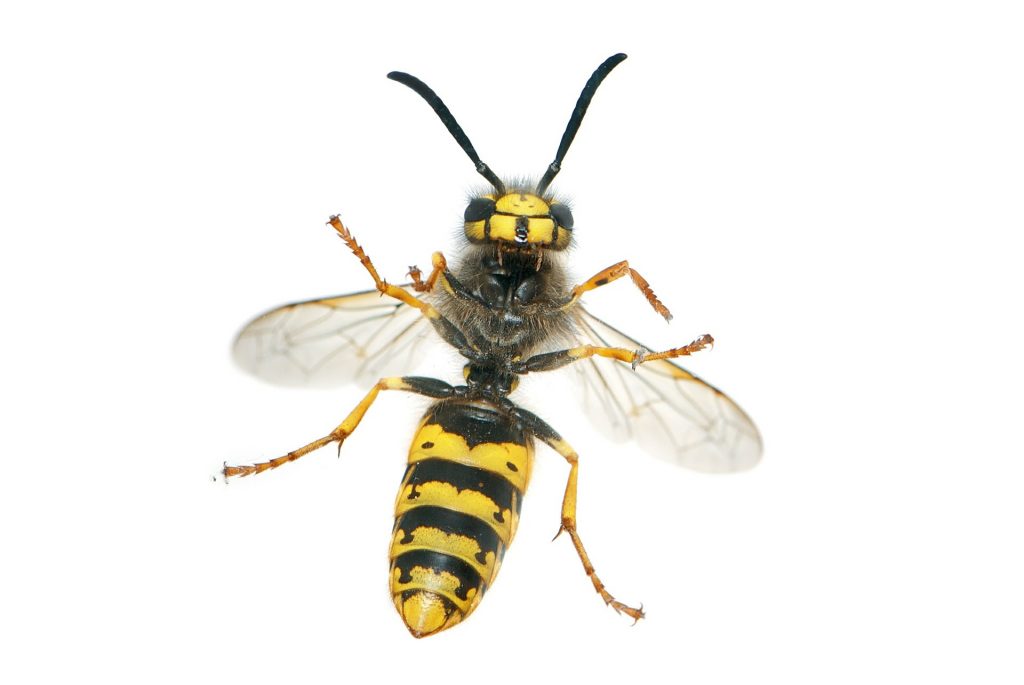
Nowadays wasps and hornets (Vespidae) and bees (Anthophila) are much feared. Wasps and hornets cause an even greater fear in humans than bees, even though all these insects are basically peaceful creatures. We should learn to understand them and how to behave in their presence in order to protect them because they do far more than we think and are essential for our ecosystem.
In the following summary we would like to introduce the wasp, how to recognize it, what it is good for and how to prevent a wasp nest in your own house or living area.
What are the benefits of wasps?
- Wasps are a popular food for many animals, such as birds and mice. 1
- They help pollinate and even fly out in the wind and rain, which bees do not.
- They are natural regulators in nature and carry out biological pest control, because in addition to their preference for mosquitoes, spiders, flies and other insects, they also eat pests, which are often a nuisance to us. (A large wasp nest eats half a kilo to 2 kilos of insects a day!)
- Wasps also control pests in the forest and regulate the population of forest pests and fast-growing insect populations, such as flies and horseflies.
- In addition, wasps, like bees, are under species protection in Austria and Germany. The removal or relocation of a nest may not be carried out without reason and permit. Otherwise this can also result in paying penalty. In any case, get the help of a pest professional and inform yourself properly. 2
What dangers do wasps pose to humans?
The worst that can happen is getting stung. If there is no sting in the skin, it was most likely a wasp, because a wasp can sting multiple times as they do not lose their stinger unlike bees. Their sting can lead to redness, swelling and itching. 3
Of course, allergy sufferers are a special case. The body of an allergy sufferer reacts to the protein introduced by the insect’s sting.4 For these people, this can become a serious health problem or even a life-threatening risk.5 If you have a reaction to the sting you should consult a specialist immediately and locate the nearest emergency pharmacy.
The characteristics of a wasp:
Wasps are characterized through the conspicuous black-yellow colouring and its strongly constricted abdomen (wasp waist). In contrast, the body of a bee is brownish in colour, round and covered with hairs.6 Both wasps and bees have a stinger, which fulfills different tasks. Wasps can sting multiple times and use their stinger to hunt insects. Bees can only use their stinger once, for self-defence, and die afterwards. The barbed hook on the bee’s stinger causes it to stick in the skin and the bee tears off part of their abdomen when trying to remove it.7
There are many different species of wasps, but only two species can be annoying to humans: The German and the Common wasp literally fly onto our food and are attracted to sausages, meat, cakes or ice cream, as well as sweet drinks. All other wasp species leave us alone – they are only interested in insects and their larvae.1
Often the easily detectable, freely hanging nests generally found on the outside of buildings or in bushes belong to the less aggressive species, and therefore these are unfortunately often destroyed unnecessarily. The German and Common wasp build their nests either underground in old mouse holes or above ground in dark, well camouflaged places, e.g. in hidden corners of attics, roller shutter cases etc.8
How can we live peacefully with wasps?
Wasps, as already mentioned, are a protected species in some countries and we should try to get along well with them. Here are some tips that you may find helpful:
No Go’s:
- Do not thrash your arms around and avoid violent movements when wasps fly around you.
- Do not blow at them. Carbon dioxide in the air makes wasps aggressive.
- Leave the nest alone and do not try to remove or resettle it without professional help, etc.
Tips for keeping wasps away:
- Cover food and drinks and do not drink directly from cans or bottles – better to use a straw (non-plastic or re-useable). Especially with children you should pay attention to this and wipe their mouth and fingers thoroughly after eating.4
- Remove fallen fruit quickly in the garden. Other waste and organic bins should also be well sealed.
- Also remove rotten wood in good time. In spring between April and May, wasps start building their nests, for which rotten wood is ideal.1
- Place your trust in plant scents. Plants and shrubs such as basil, lavender, lemon balm and peppermint, as well as cloves, tea trees and eucalyptus smell good and are decorative for us, but these smells are unpleasant for wasps. These scents as essential oils in a fragrance lamp can also help to keep te annoying insects away.9
Still not reassured?
In order to be safe and to protect children and allergy sufferers, we recommend the use of BIO/CLEAN KILL Extra micro-fast.
In spring and summer to help keep insects out apply BIO/CLEAN KILL every two weeks around window frames, on curtains, in cracks & crevices, joints and corners.
BIO/CLEAN KILL can also be used around the outside of the house to prevent wasps from nesting on the walls, in roller shutter cases, under the roof, or in the attic. Spray all potential wasp nesting areas extensively until they are well moist – do not spray so it drips!
The preventive use of our BIO/CLEAN KILL biocide will deter wasps from building nests in your immediate environment. So at a later date there will be no need to attempt to resettle or destroy any nest.
However, if you already find a wasp nest, do not try to remove it on your own. As already mentioned, these insects could be under species protection. Contact a professional pest controller. He can determine the wasp species and knows how to deal with it.
Market specific: If Bio/Clean Kill Extra micro-fast is not available (Blue Label), please use Bio/Clean Kill Original or Classic (Green Label)
First aid after a sting:
If you do happen to get stung here are a few tips for you:
- Press the wasp venom (and if necessary, the sting) out of the wound. DO NOT suck it out, otherwise the poison could be absorbed through the mucous membranes.10
- Heat: Immediately after the sting it may help to heat the puncture site. This is because wasp venom contains protein compounds to which our body reacts with the release of histamine. This can also lead to severe swelling. A warmed spoon or a hot washcloth (ideal temperature is approx. 50 degrees Celsius) ensures that the proteins in the insecticide coagulate. This can prevent large swelling.
- Do not scratch as there is a risk of infection.3
- Cool with ice cubes (wrapped in a cloth) against swelling or dab the wound with 70% alcohol.
- Old household remedies: Rub the wound with a raw onion or salt or apply saliva.4
- For stings on/in mouth or throat you should seek immediate medical attention.

Click here to see: WORLD OF WASPS – REFERENCES